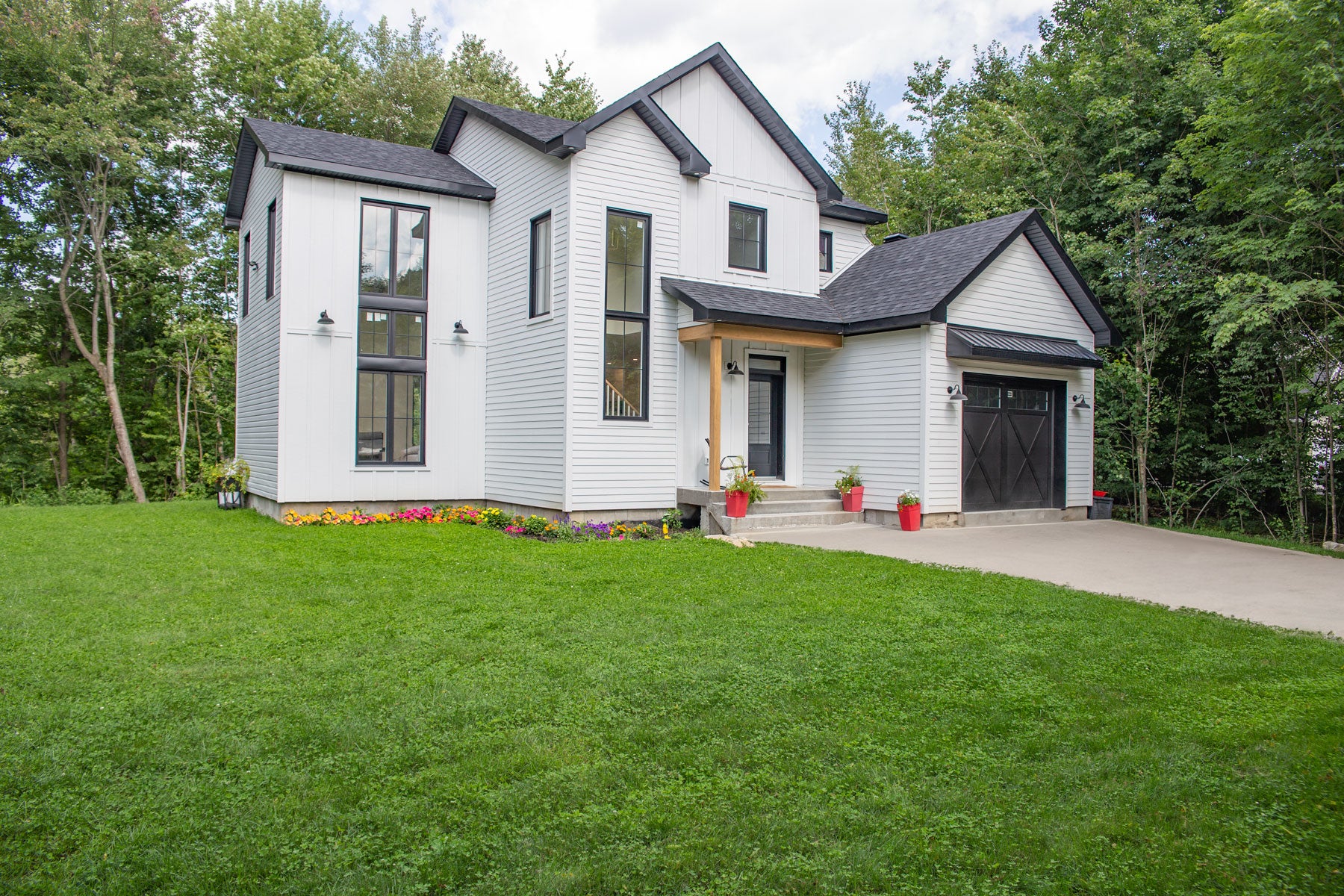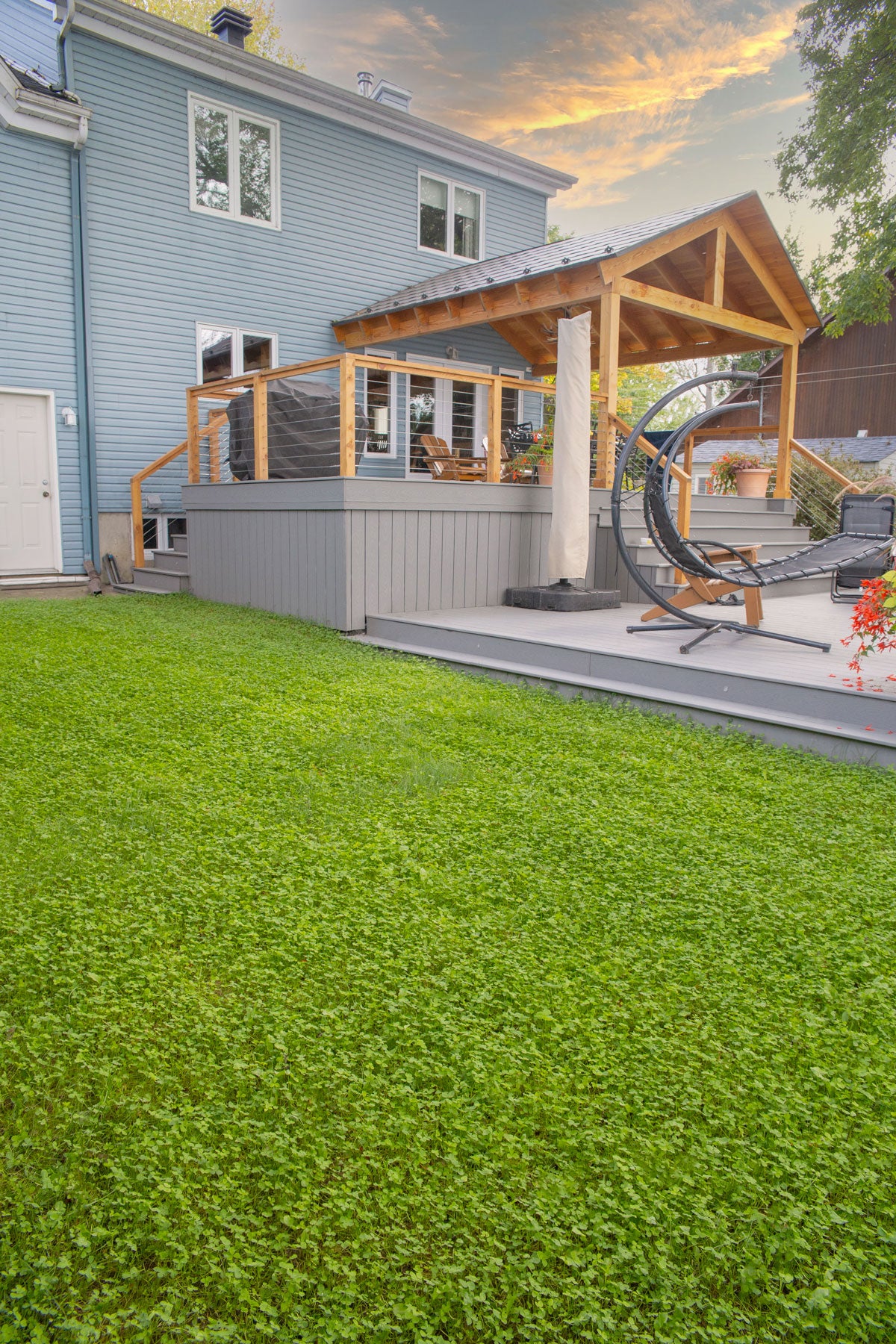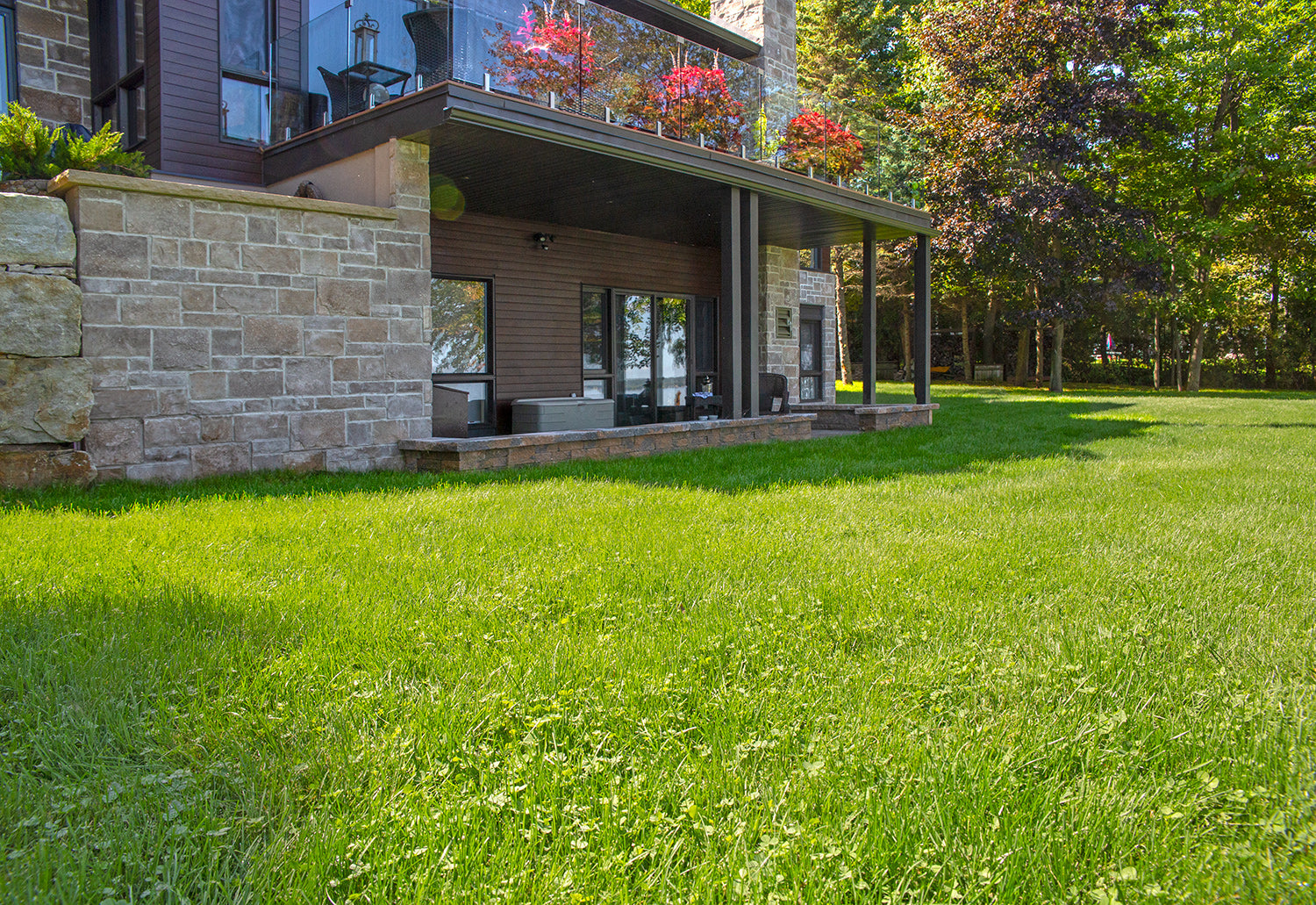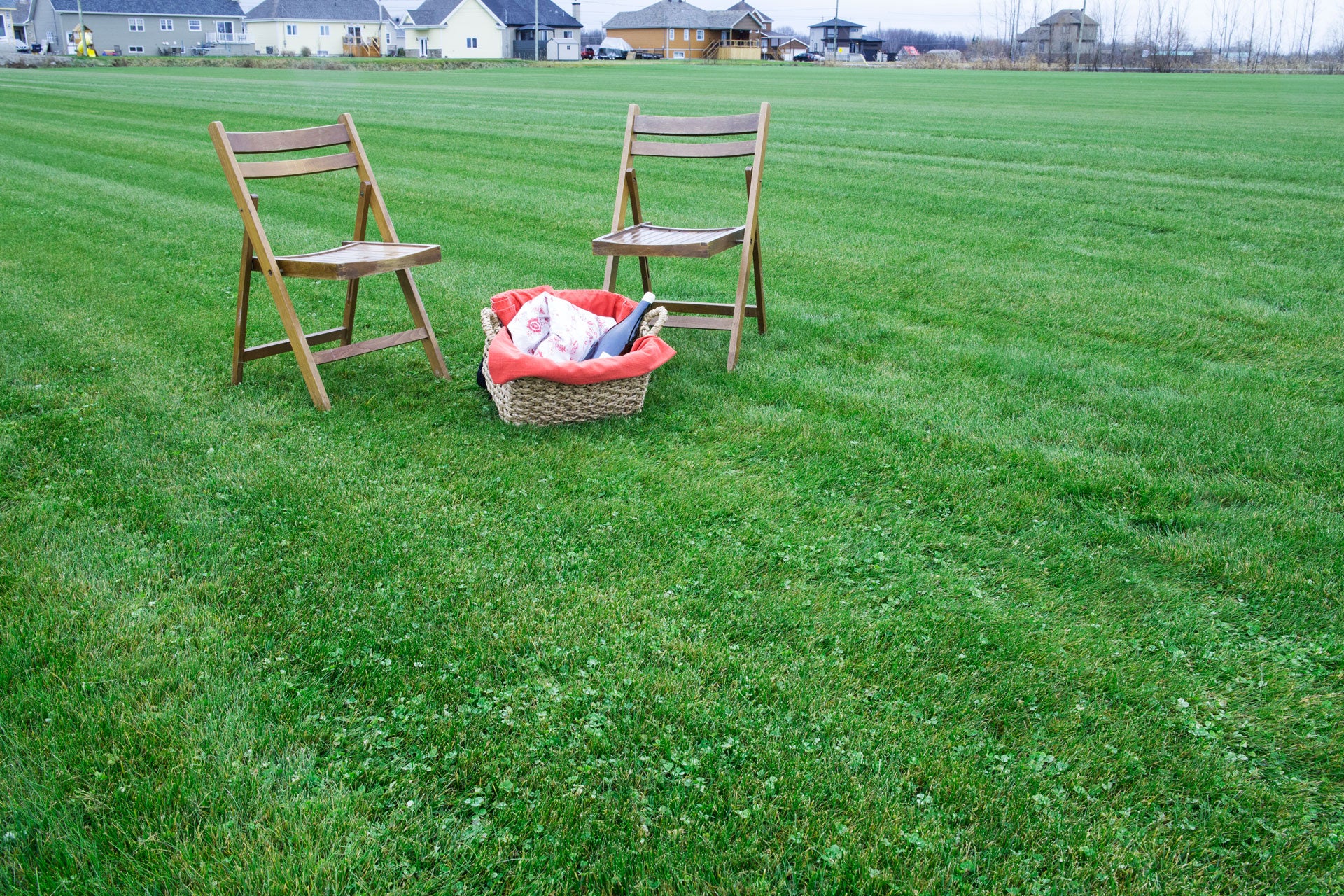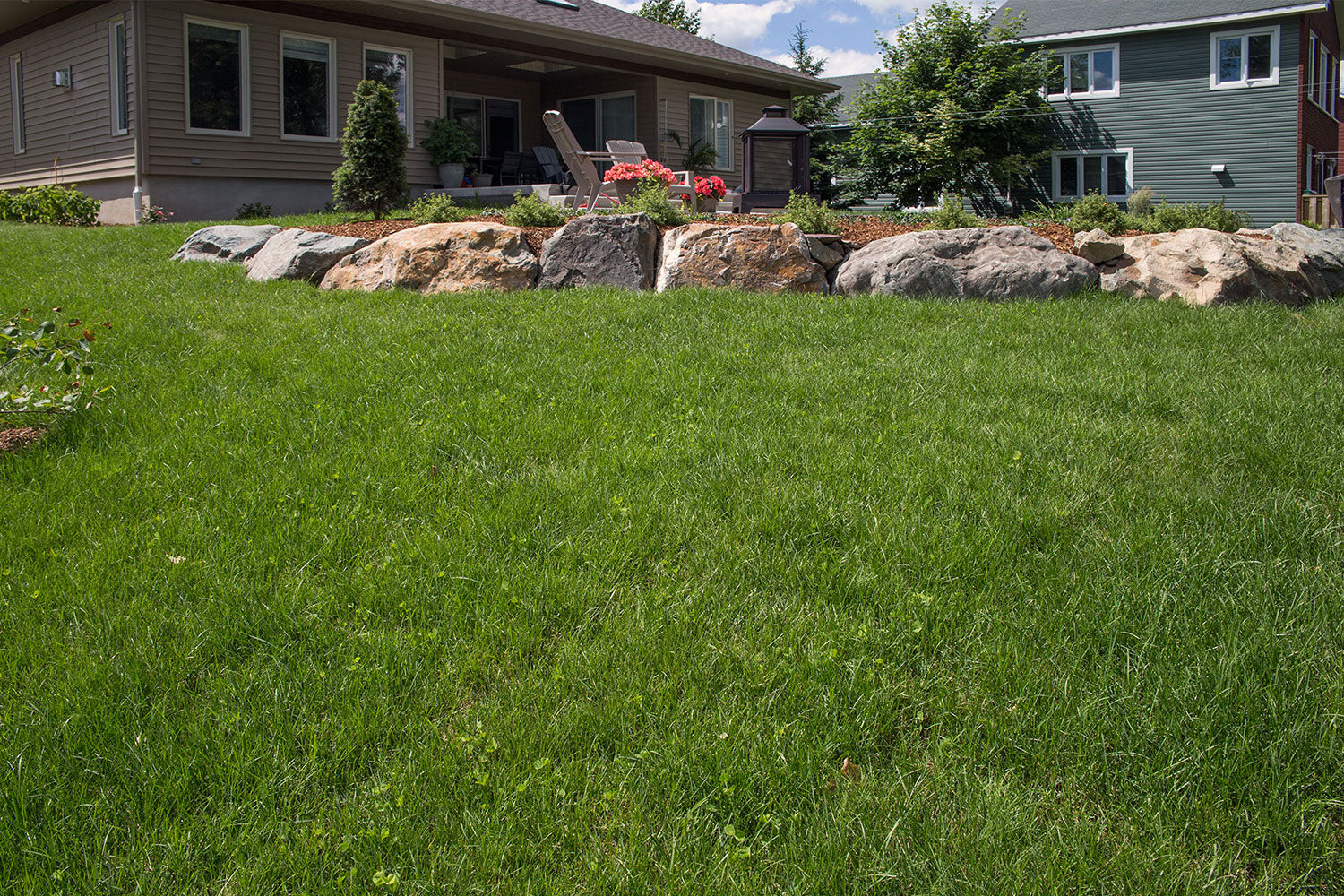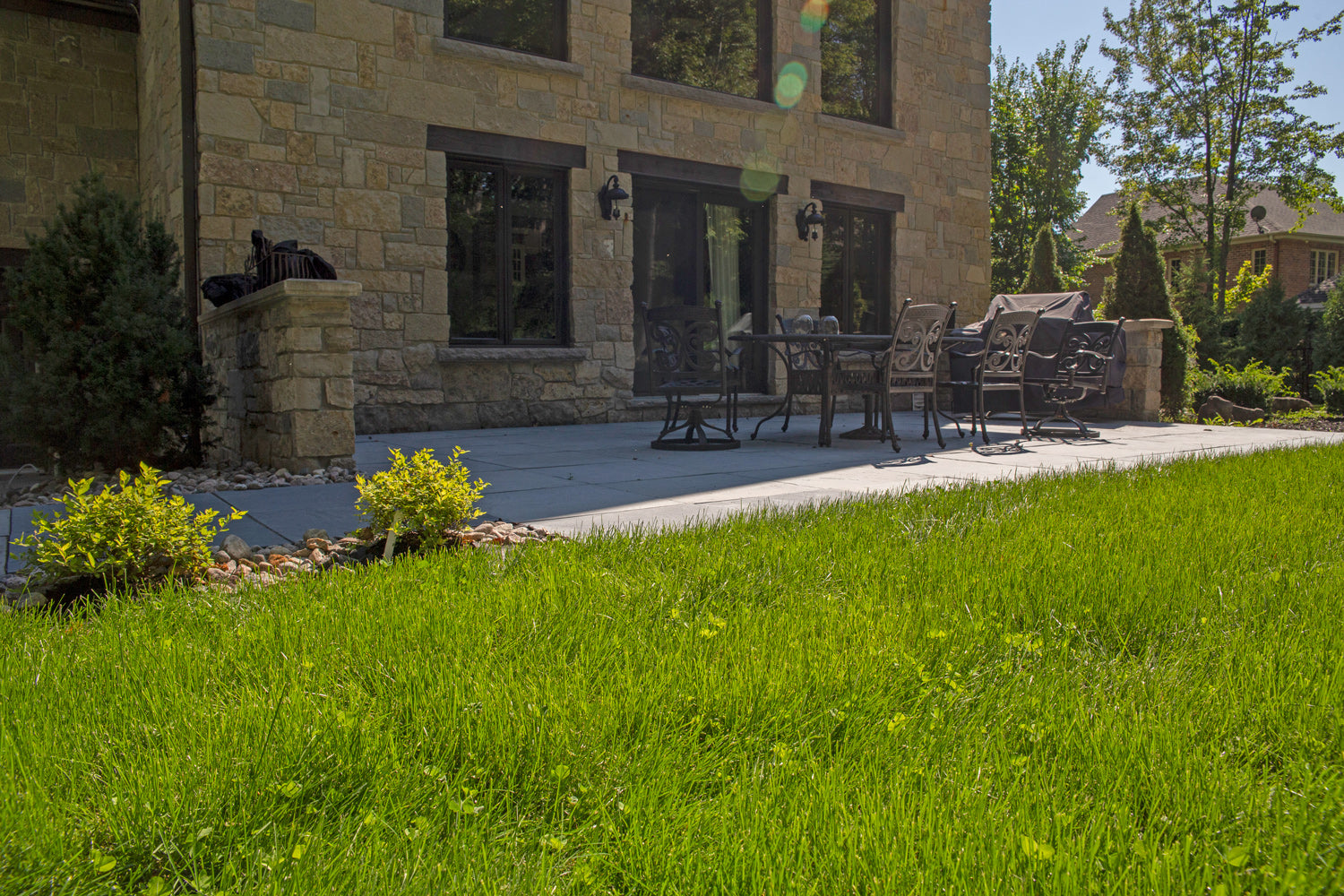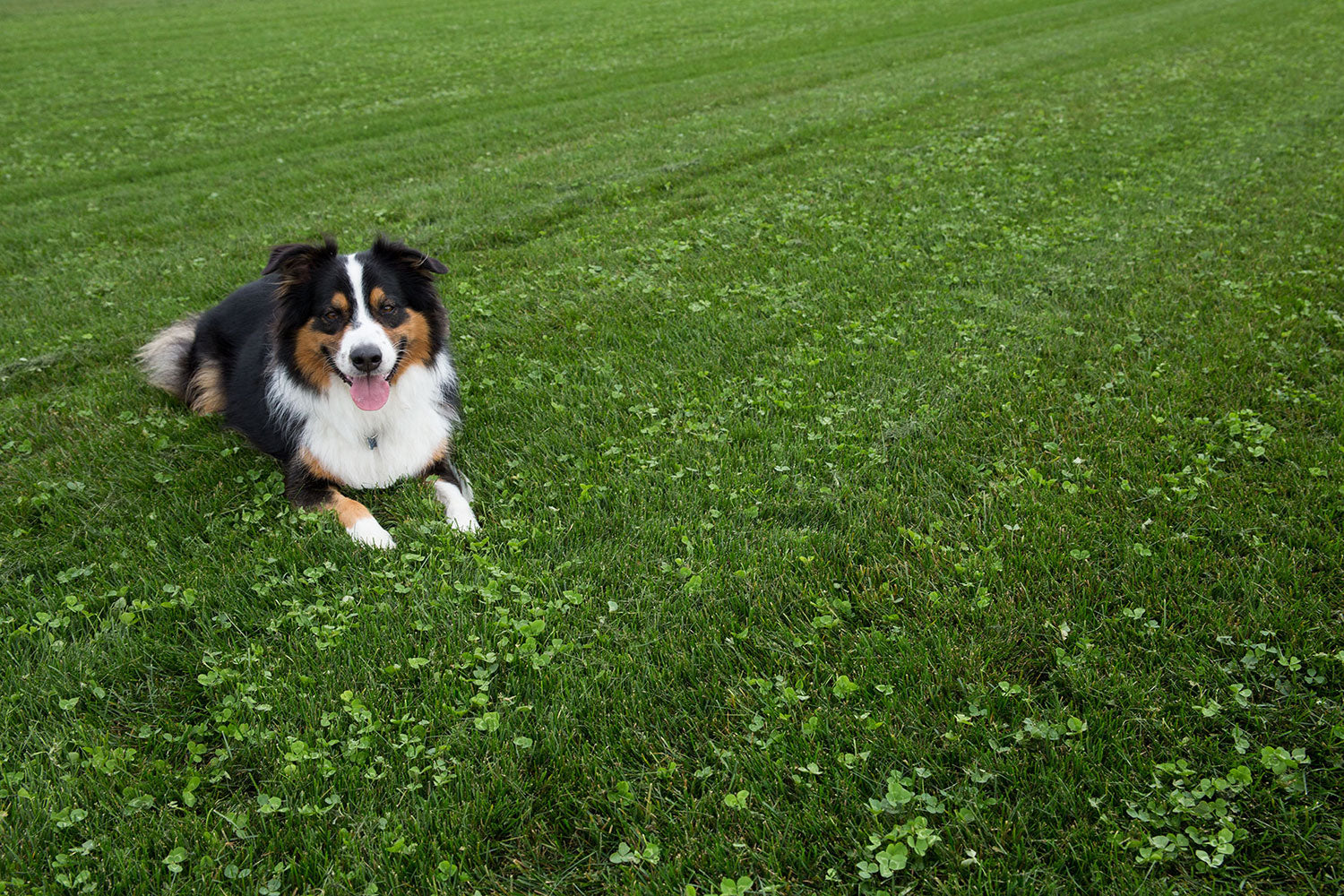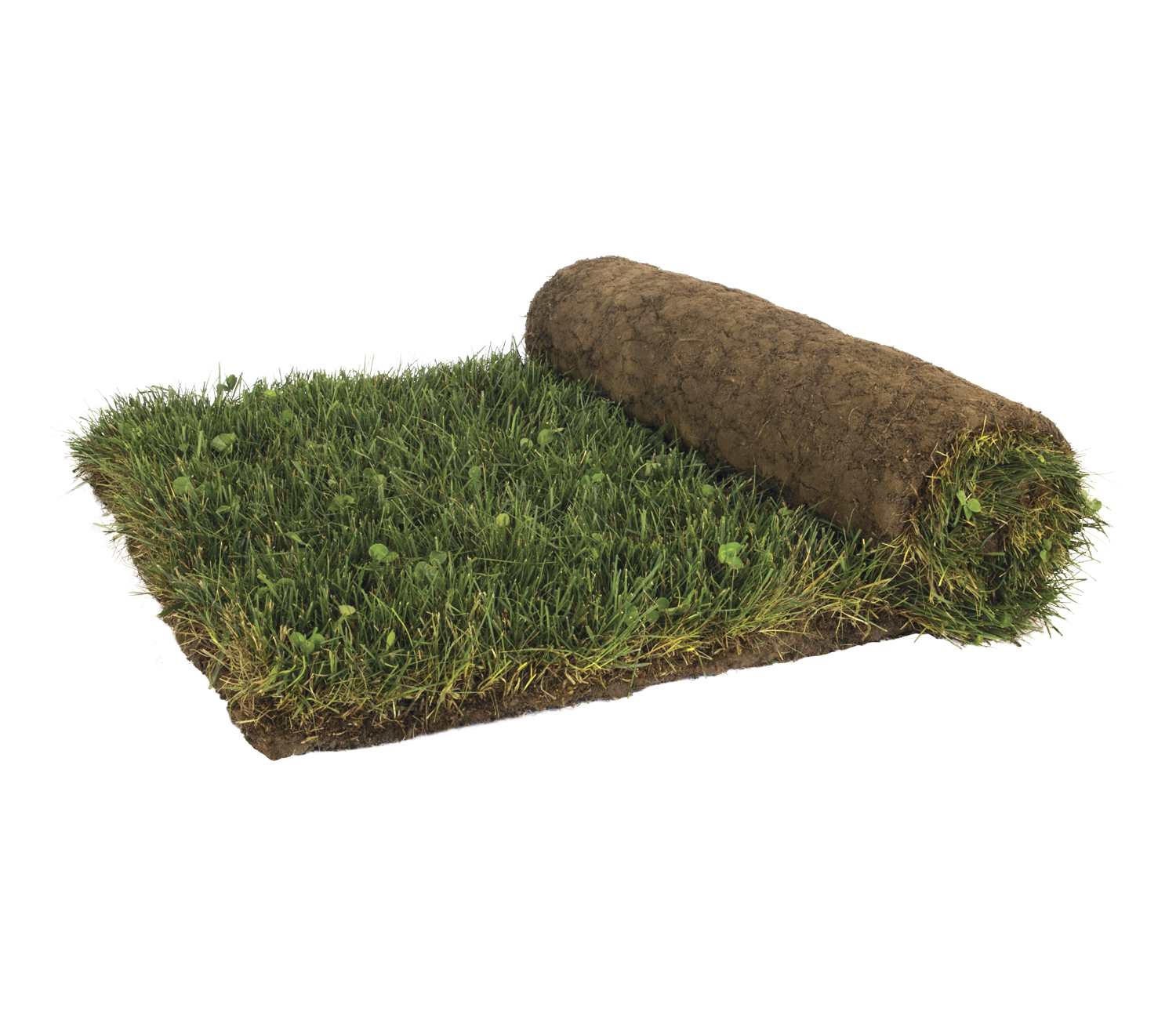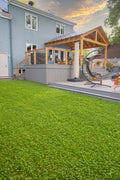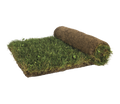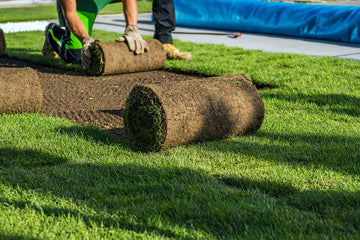Eco-Turf
The Eco-Trefoil grass is one of our most ecological varieties thanks to its biodiversity. The presence of dwarf clovers and fine fescues makes it a low-maintenance lawn. Slightly aggressive, the Microclover® mixes well with grasses thanks to its small size. In addition, this certified «Water Saving» grass stays green longer in case of drought, thus reducing water waste. Opt for a greener lawn!
The proportion between Microtrefles® and turf grasses may differ in appearance over time or from one production to another since several factors, such as climatic conditions, can influence their quantity in the mixture.
Comment choisir la bonne variété ? Voir notre vidéo interactive.
 Product Specifications
Product Specifications
| Weight | 30 lb |
|---|---|
| Dimensions | 2 ft x 5 ft (10 ft2) |
| Per Pallet | 74 rolls (740 ft2) |
🧮 Sod Rolls Calculator
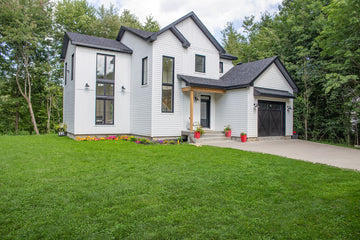
Eco-Turf
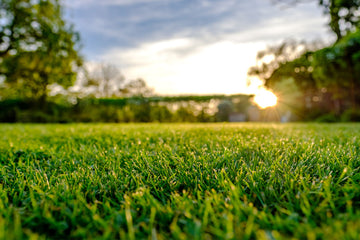
Pelouse durable
Pour du gazon durable
Une pelouse écologique, c’est aussi une terre à gazon (top soil) de qualité en quantité suffisante, l’absence de compaction, une tonte plus haute, une fertilisation raisonnée, la pratique de l’herbicyclage, une tolérance accrue au phénomène de dormance et à la présence de mauvaises herbes. Pour plus de renseignements, consultez les normes BNQ d’implantation et le site web « Pelouse durable » (créé par l’Association des producteurs de gazon du Québec).
Biodiversité & bienfaits du gazon
Les bienfaits
Les arbres, les arbustes, les vivaces et les espaces engazonnés participent, chacun à leur manière, à augmenter la biodiversité de nos milieux de vie. Les espèces de graminées présentes dans nos pelouses sont sensiblement les mêmes que celles qu’on retrouve dans les prairies naturelles. Ces milieux favorisent le maintien de sols en santé en augmentant leur apport en matière organique et en diminuant les risques de compaction, d’érosion ou de ruissellement. Ils agissent comme une éponge ultra efficace en cas de précipitations importantes et ils abritent de nombreux micro-organismes, insectes et animaux, en plus d’être considérés comme d’excellents puits de carbone.
Un gazon maintenu plus long et/ou composé de plusieurs espèces aura un impact encore plus positif sur l’environnement. De plus, les attaques de parasites, l’incidence des maladies et l’impact du stress climatique seront moindres dans un environnement plus biodiversifié. La présence de fleurs attirera les insectes pollinisateurs, lesquels sont indispensables à la vie. Un écosystème riche favorise également la résilience face aux événements climatiques extrêmes, tels que les inondations. Finalement, les pelouses agissent comme climatiseur en maintenant l’air frais, participent à la conservation de l’eau, aident au contrôle des espèces invasives et diminuent la segmentation des habitats. Cliquez ici pour en savoir plus sur les bienfaits d’une pelouse durable.
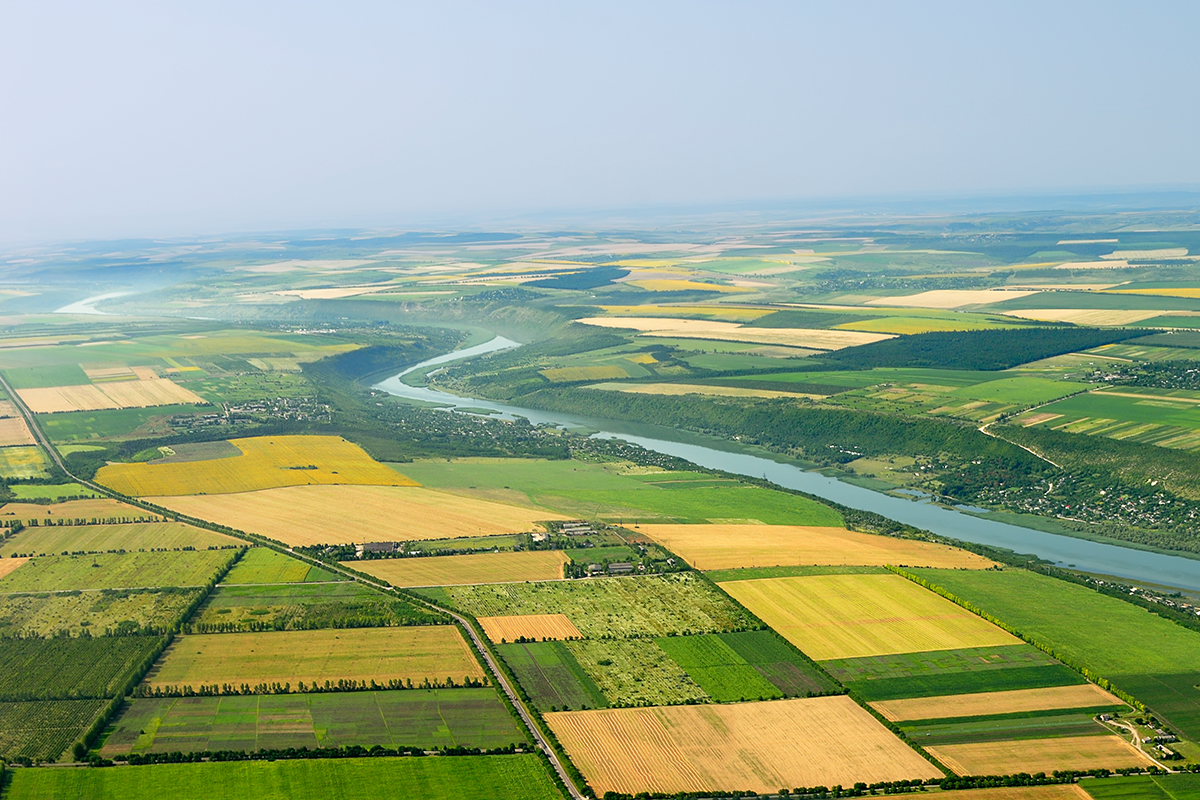
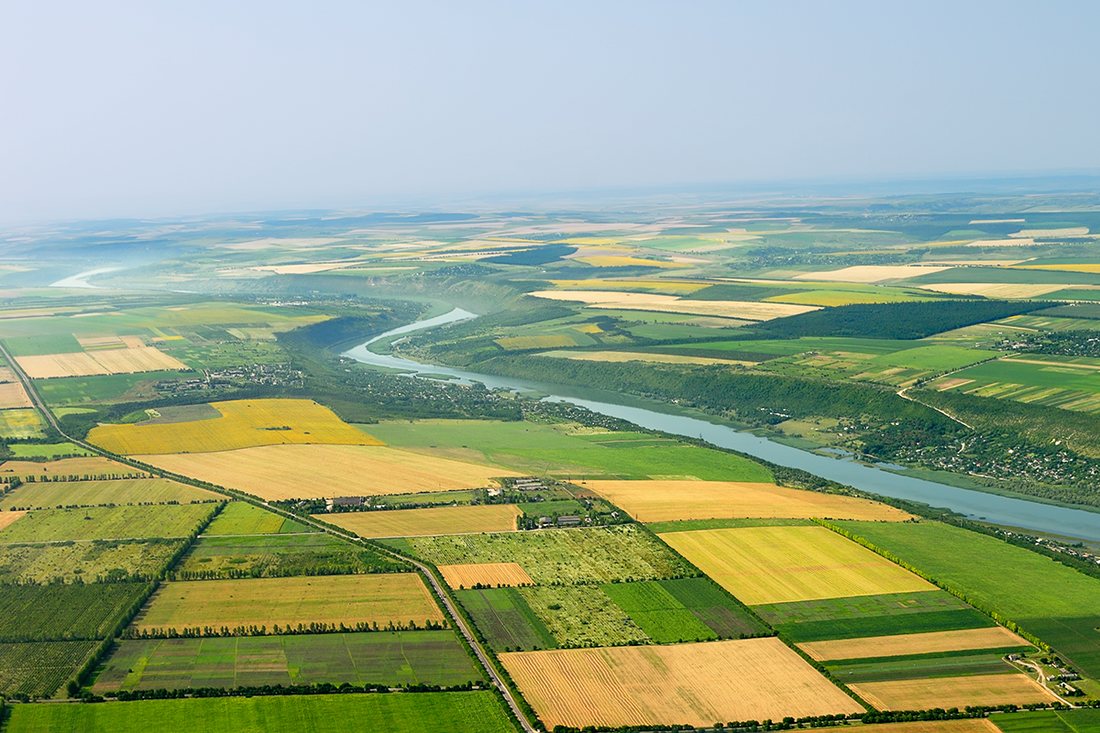
La lutte aux changements climatiques
Plusieurs scientifiques s’entendent pour dire que l’agriculture régénératrice est une des solutions pour lutter contre les changements climatiques. Chez Groupe Richer, depuis une dizaine d’années, notre équipe agronomique adopte de nouvelles méthodes culturales plus écoresponsables visant, entre autres, à capter le carbone de l’air et à le stocker dans nos sols.
FAQ
Est-ce que je peux avoir une soumission ?
Vous pouvez obtenir votre prix directement sur le site. Il suffit de choisir votre variété, votre superficie, de répondre aux questions et d’entrer vos informations de livraison ou de ramassage. À noter également que les prix sont plus avantageux en ligne qu’en téléphone, nous vous encourageons donc à commander directement sur le site.
Est-ce que je peux avoir de l’aide pour choisir la bonne variété ?
Pour choisir le gazon le mieux adapté à votre terrain, nous avons mis sur pied une vidéo interactive pour vous aider. Sinon, vous pouvez vous référer à ce document explicatif qui en fait un résumé !
Est-ce que vous préparez le terrain ?
Nous n’avons pas de service d’aménagement paysager clé en main. La terre n’est pas incluse dans la commande, mais vous pouvez en trouver en vrac ou en sac sur notre site.
Nous n’offrons pas le service de nivelage ni le retrait du vieux gazon, vous devez vous charger de la préparation de votre terrain ou engager un professionnel pour le faire. Pour mieux vous préparer, nous vous invitons à consulter ce guide. Sinon, n'hésitez pas à nous contacter pour des références.
Faites-vous l’installation ?
Nous offrons le service d’installation ! Il suffit de remplir le formulaire lorsque vous choisissez votre gazon pour avoir votre prix. Pour plus d'informations sur l’installation, c’est ici !
Quand est-ce que je vais recevoir ma commande de gazon ?
Notre but est de livrer le plus rapidement possible, soit à votre date choisie ou 48h après votre commande web et selon votre plage horaire (AM ou PM).
Livrez-vous chez moi ?
Nous livrons dans l’Outaouais, la Montérégie, le Grand Montréal, Laval, la Rive-Sud et Rive-Nord de Montréal, l’Estrie, les Laurentides, Lanaudière, la Mauricie, le Centre-du-Québec, la ville de Québec et plus encore ! Entrez votre code postal ici pour confirmer votre zone.
Quel est le moment idéal pour l’installation de gazon?
Tous les moments entre mai et décembre sont idéaux pour la pose du gazon. Par contre, à noter que les canicules peuvent amener des problèmes, notamment en ce qui concerne l'arrosage. Pour cela, voici les meilleures périodes: mai, juin, septembre, octobre, novembre et décembre.








